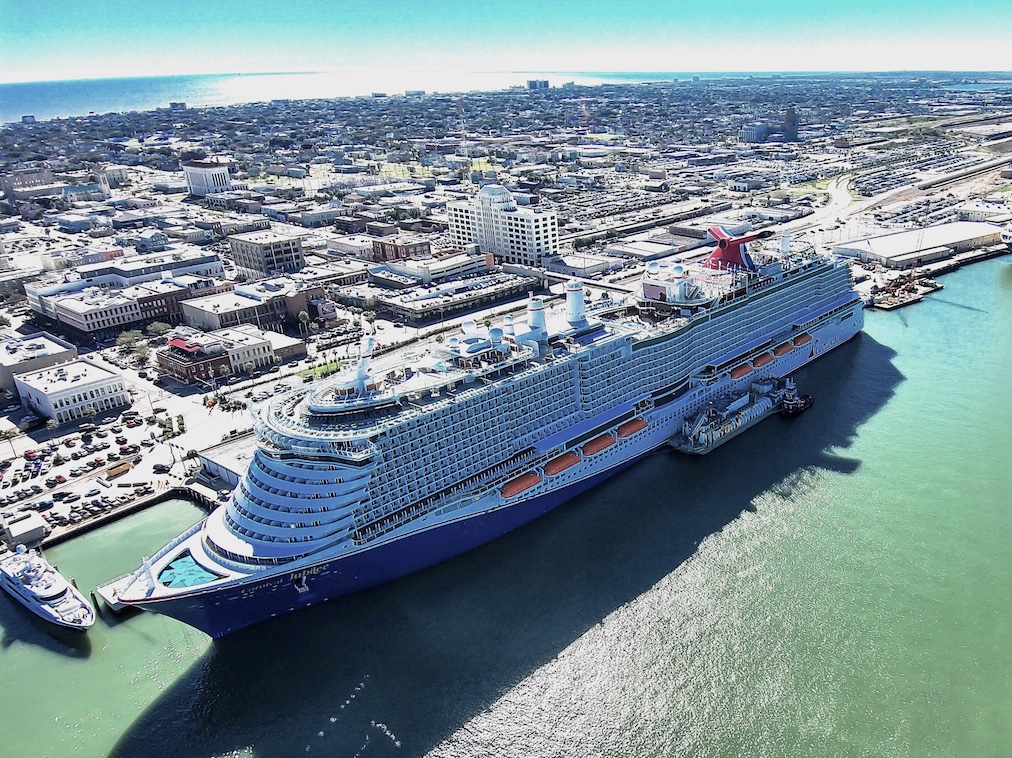The Port of Galveston is among the first U.S. ports to make liquefied natural gas (LNG) services available to ships, offering environmental benefits and a competitive advantage. The newly built Carnival Jubilee was fueled with LNG for the first time at its Gulf Coast home port before sailing on Dec. 30.
“Providing LNG fuel at the port opens opportunities for the Port of Galveston to attract newer, technologically advanced cruise and cargo ships,” said Rodger Rees, Galveston Wharves port director and CEO.
Carnival Jubilee, the first new ship to homeport in Galveston, has contracted with two companies for the fuel services. The LNG is manufactured and delivered by Stabilis Solutions and loaded by Seaside LNG from a specially equipped barge. The Jubilee also can run on traditional marine diesel fuel.

Approvals and preparations to provide the alternative fuel involved several entities, including the U.S. Coast Guard, the Galveston Wharves, the Galveston Fire Department, Port of Galveston Police Department, Carnival Cruise Line, Stabilis and Seaside.
The multi-step process included studies and assessments, emergency response planning and training, and additional port security measures before the Coast Guard issued a letter of recommendation confirming that the LNG loading and bunkering operations complied with federal regulations.
LNG An Alternative Fuel of the Future
LNG fuel is one of the best options available for cruise ships to reduce the industry’s carbon footprint, according to the Cruise Lines International Association. By using LNG fuel, sulfur emissions are reduced by nearly 99 percent and nitrogen oxide emissions are reduced by 85 percent.
LNG is manufactured by purifying and super-cooling natural gas into a liquid form to reduce its volume and make it easier to use. Removing sulfur during the liquefaction process means that no sulfur compounds are emitted when LNG is used as fuel. Compared with other fossil fuels, natural gas emits the least amount of CO2 when combusted.
The emerging alternative marine fuel has been adopted for a wide range of vessels, including cruise ships, container vessels, crude tankers, chemical tankers, passenger ferries, car carriers, tugs, bulk carriers, fishing vessels and dredgers. With a growing number of LNG-fueled vessels operating in the Gulf of Mexico, demand for LNG as a bunker fuel is rising.
Rees said, “Supporting LNG services also aligns with our air quality goals as a Green Marine-certified port. We’re implementing several initiatives through the voluntary North American program to improve our environmental performance, including shore power and waste reduction.”







